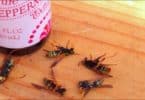If you have ever tried to maintain a vegetable garden or simply a pleasant looking lawn, you may have had to suffer the pains of that one major pest – the groundhog. Though many people have often recommended fumigating the burrows by way of employing carbon monoxide canisters or instead directly shooting the animal, you may not necessarily live in an area where this is a legal solution.
You can opt to purchase a commercial repellent for groundhogs, but the truth is that many are not very effective. It is possible for you to remove this nuisance without having to resort to killing them, though. It is also possible for you to prevent them from getting into your garden before you have actually taken them out of your property.
For this project, you will want to have a shovel, an inch to three of chicken wire fencing, some fence posts, medium sized live animal traps, some unscented dish soap, vegetables or a similar bait, rubber gloves and the contact information for a local department for Animal Control.
- Use the shovel to dig a ditch that is roughly one foot to a foot and a half deep, ensuring you do not make it too wide. Put it around the garden or in other areas that you do not want the groundhog to get into. Use the fence posts and the chicken wire to construct a sort of fence around that area, making sure the fence is placed directly into the ditch you dug. It will be correctly inserted when it is extended into the underground. This is so that the groundhog cannot burrow beneath it. After inserting the fence, make sure to fill it back up with dirt.
- After donning a pair of rubber gloves, use clean water and unscented dish soap to thoroughly wash the animal trap. Take your bait and insert it into the trap. Place the trap close to one of the entrances of the den where the groundhog likes to dig its holes. Make sure that you are wearing gloves while you are doing this so that you do not allow your scent to get into the trap, which will turn the groundhog away from it.
- Regularly check on the trap, but do not get too close when you look. If you have not caught your groundhog after about two or three days, remove the trap from its location and put in a new piece of bait. Put the trap in a new location near the entrance for the garden. If your garden has more than one entrance, you should consider changing the entrance that you place the trap near every time you have to put in new bait.
- Once you notice that the groundhog is in the trap, do not try to handle it. Instead, call the local office for Animal Control so they can deal with disposing of the animal.
- Keep a close eye on your garden to see if there are any other groundhogs. If you do not see any other groundhogs for a few days, fill in all of the entrances with dirt and see whether or not another groundhog opens them up again. In the event that you see a sign of another groundhog or that you see the entrances to your garden have been reopened, repeat these steps to capture any of the other ground hogs that remain in your garden.
- If you wish, you can take out the fences you made after getting rid of all of the groundhogs. However, you may want to keep them there so that they can deter other rodents.
<>







